With One Email, Kalamkari Weaver Lives Dad’s Dream & Makes the 400-YO Craft International
Kalamkari fabrics of Andhra Pradesh-based Pitchuka Srinivas are exported to Japan, Netherlands, UK, USA and Germany.
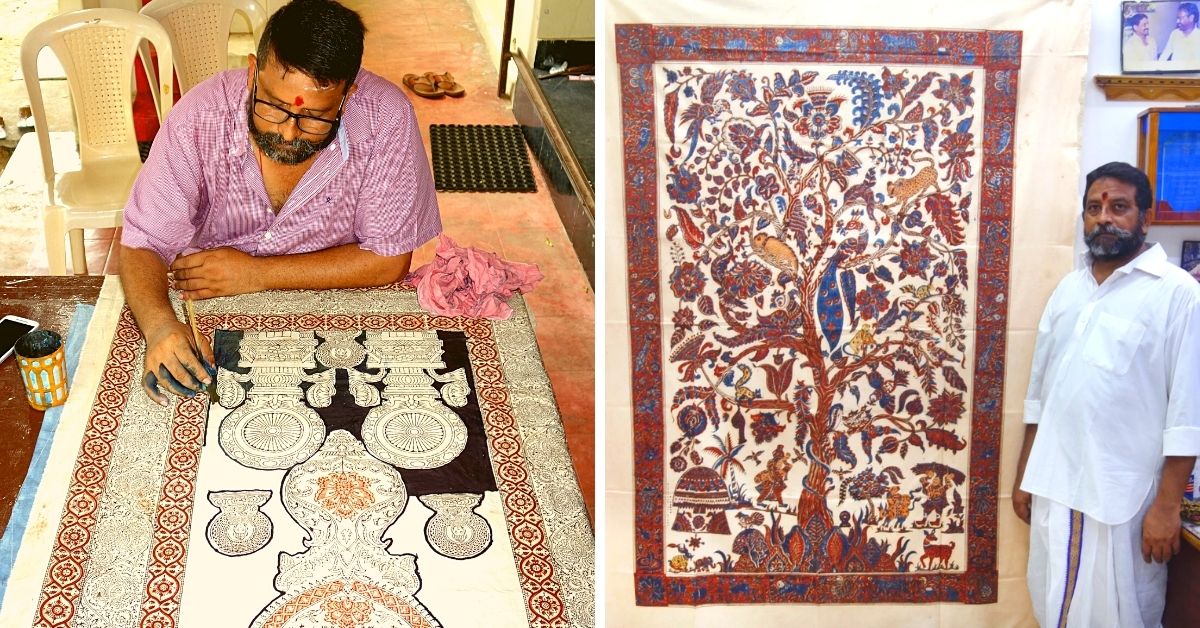
India welcomed the internet in 1986 but it was only a decade later when the dot-com bubble penetrated our lives, as VSNL became an internet service provider in 1995. Towards the end of the ’90s, there was a lot of change associated with the internet as Rediff.com opened India’s first cybercafe in Mumbai, internet banking was started by ICICI and the railway reservation system was linked nationwide.
In the new millenium, as giant entities were exploring the benefits of the internet, a small-time weaver in Andhra Pradesh was on the cusp of altering the scene of Kalamkari art form with the help of the World Wide Web.
In 2001, Pitchuka Srinivas spotted an ad on IndiaMart for the requirement of Kalamkari fabric by a woman named Mary Bergtold Mulcahy based in New York.
Srinivas, who was in his late 20s, responded, “Madam, I would love to show you my work. I just cannot afford to send samples.”
The short but sincere email left Mary, a former fashion editor of Harper’s Bazaar magazine, impressed. She chose Srinivas among several other weavers to collaborate with and sent him US dollars to courier the samples of Kalamkari printing art. The images of the samples were published in a national magazine that was well received by the fashion industry.
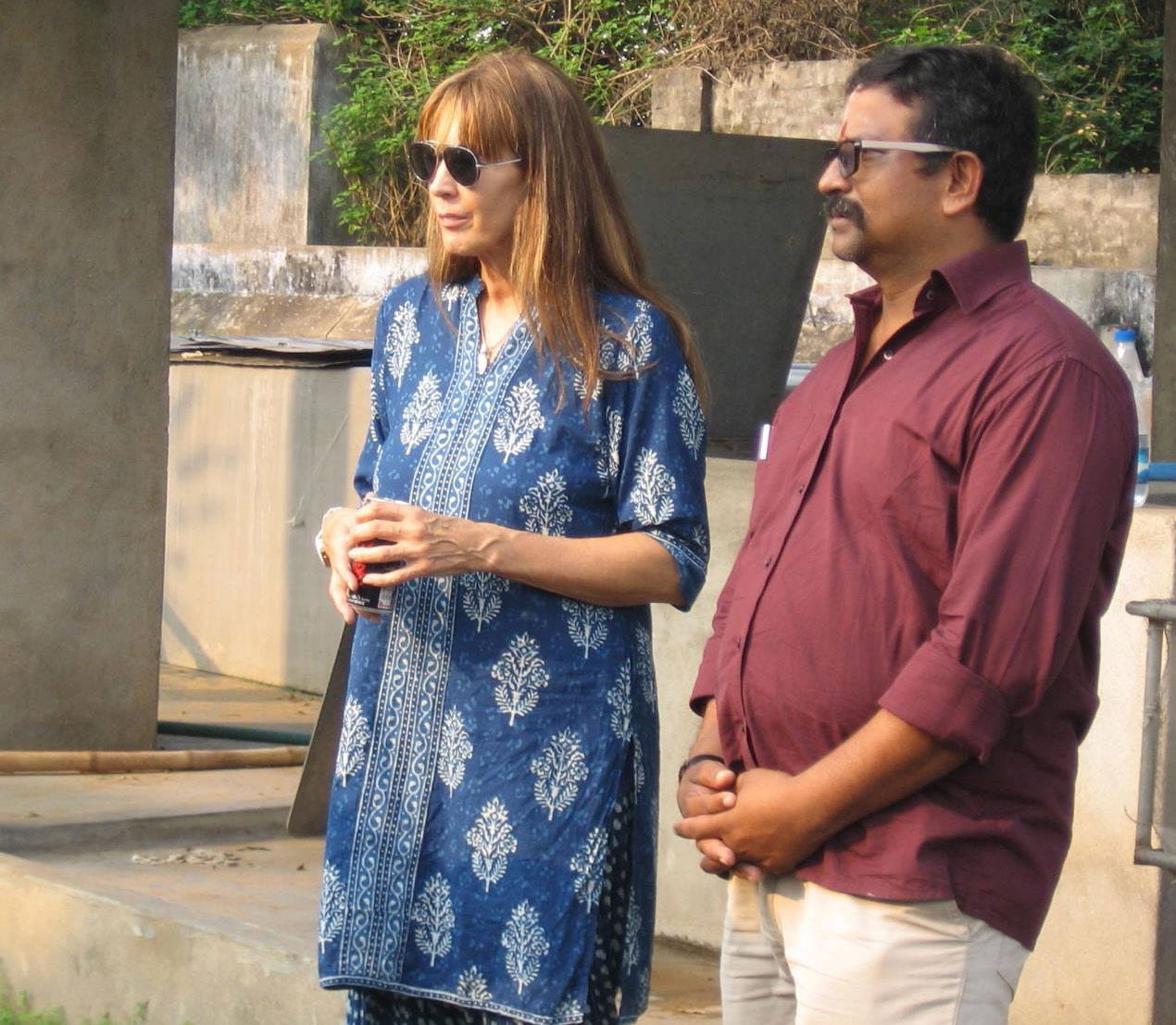
This inspired Mary to start selling the indigenous fabric in her store ‘Les Indiennes’ in 2002. She sold home decor items like table linens, pillows, bedding and cushion covers with Kalamkari imprints.
Meanwhile, Srinivas couldn’t believe that a 400-year-old art native to Indian textiles got international recognition via a powerful thing called the internet.
“I met Mary two years after we collaborated and most of our exchanges took place over email,” says Srinivas, a third-generation weaver, whose grandfather weaved on diapers and his father began his career as a clerk.
He adds, “My home-cum-workshop and the local cyber cafe became my place of worship. Besides the designs, it was my process and raw materials that impressed Mary the most. I was using 16th-century organic materials and the labour-intensive block printing technique. I am the only person in the village using chemical-free, certified organic fabric and yarn.”
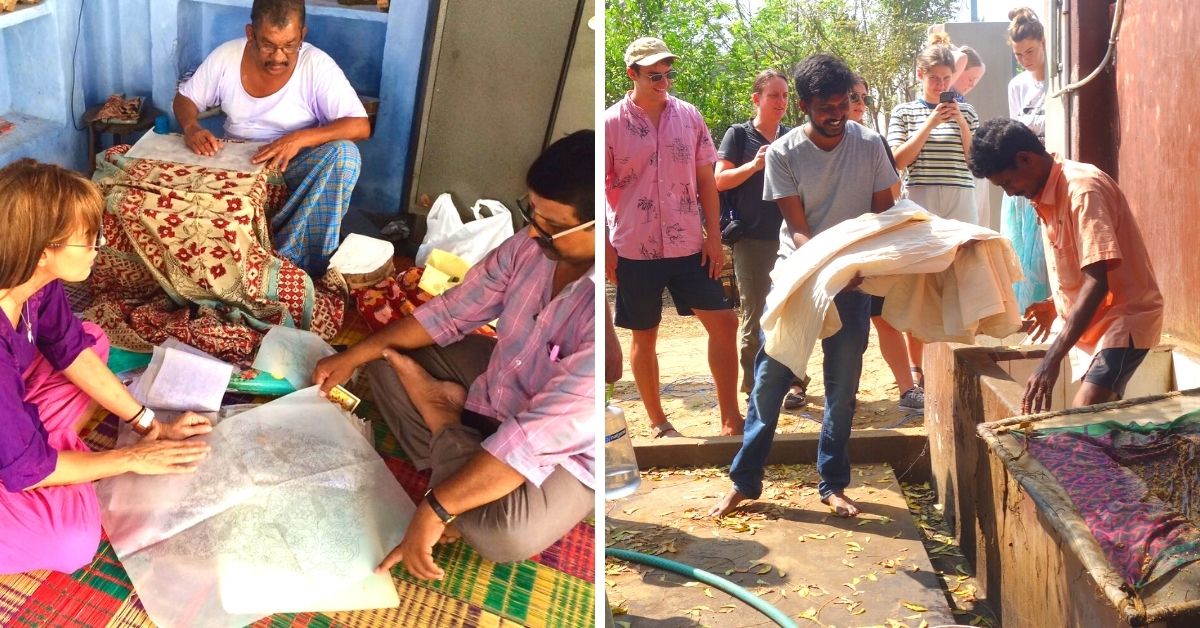
The 52-year-old credits his father’s method that helped him take over Les Indiennes and ensure a monetary growth of 60 per cent. If today, the Kalamkari fabrics of Srinivas are exported to countries like Japan, Netherlands, UK, USA and Germany, that is because he explored modern innovations while keeping intact the traditional values.
Kalamkari And Its Roots
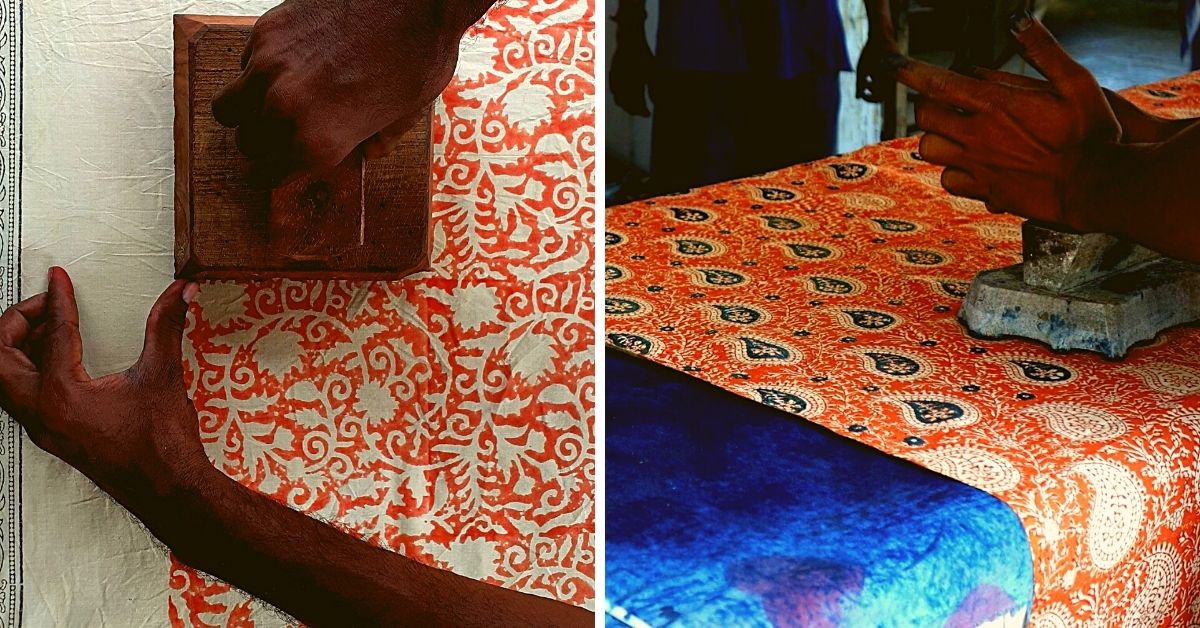
Srinivas’ father, Pitchuka Veera Subbiah, learnt the Kalamkari printing process in the 1970s and passed it on to Srinivas when he was a teenager.
Kalamkari is a hand-painted or block-printed textile item that came to India in the 16th century. It was a prized possession donned by the Golconda Sultanate. The exquisite textile was produced in the ancient city of Machilipatnam in Andhra Pradesh. The themes are centred around temple architecture and mythologies and motifs typically comprising birds, flowers and deities.
It is labour-intensive and involves various stages of dyeing, hand painting, block printing, bleaching, cleaning and more. The design is engraved on teakwood blocks that are soaked in colour to transfer the print on the fabric.
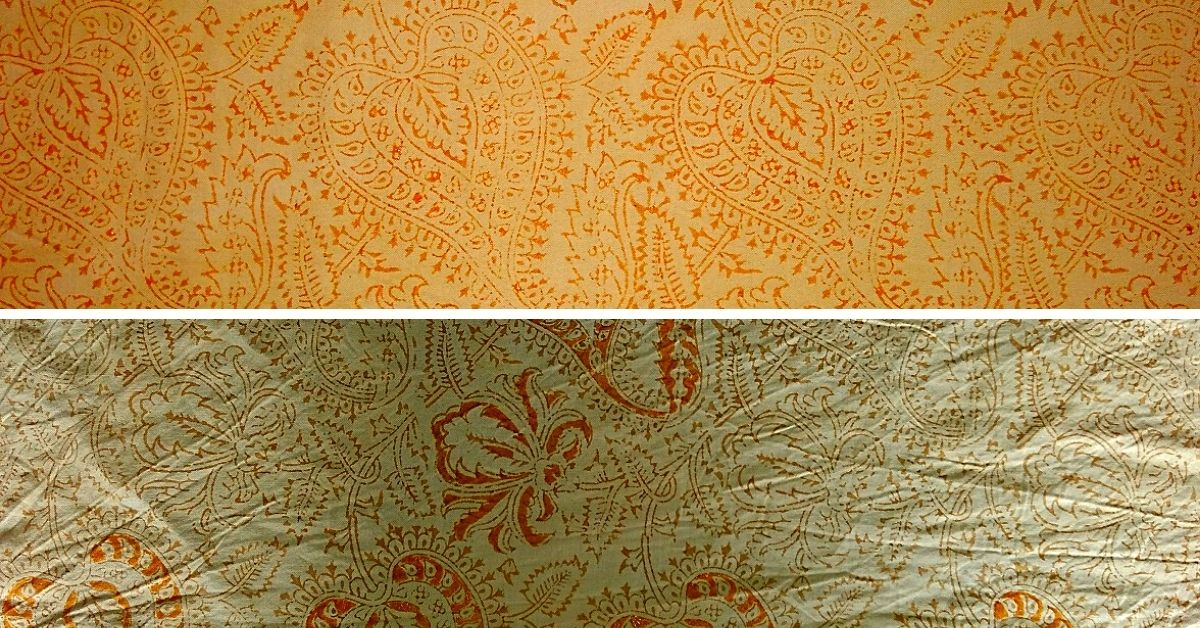
Several artisans were practicing Kalamkari when Srinivas’ father started his career in Machilipatnam. However, he didn’t focus on the GI-tagged artform of today but opted to work in a handloom firm. It was only some years later that Pitchuka learnt about Kalamkari on a visit to Bombay (now Mumbai).
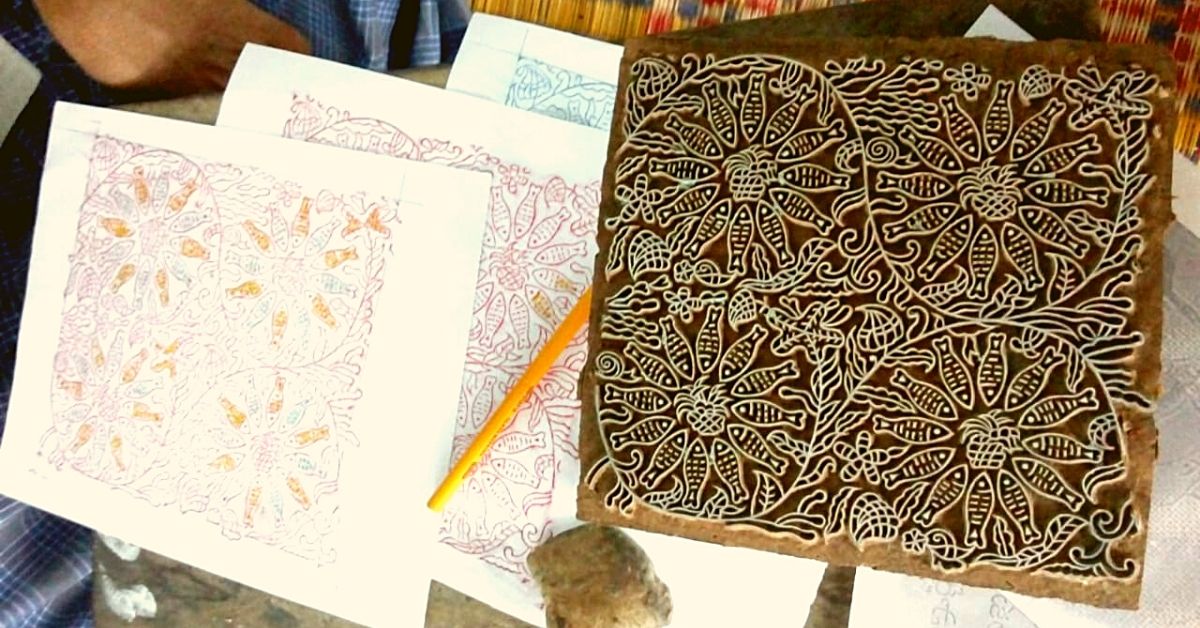
“My father loved how each pattern was intricately designed and executed with so many steps. Along with a friend, he started his business with a tight investment. He travelled across the district to source old blocks and acquired knowledge from expert craftsmen. He wanted to export the prints abroad but due to lack of courier services and absence of the internet, he was able to sell them locally. However, the revenue was not very profitable as locals didn’t value the art form as they should have,” says Srinivas.
Passing On The Legacy
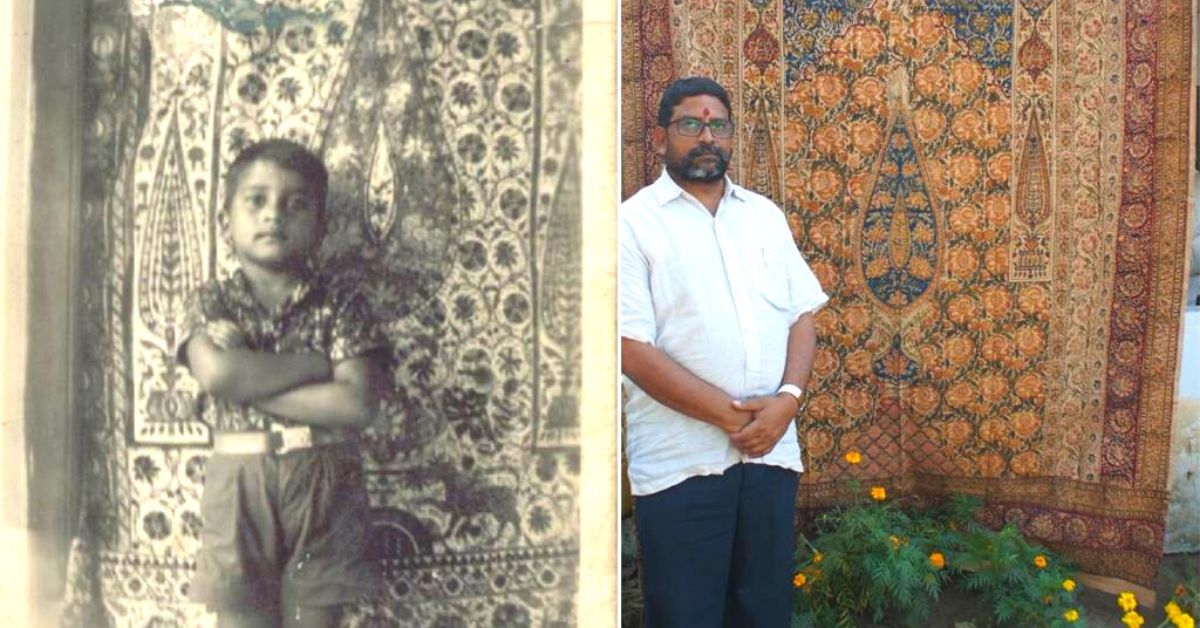
Oblivious to the low revenue margins and other problems of the craft, Srinivas decided to carry forward his father’s legacy from a very young age. After returning from school, he would tag along with the artisans to the riverside where organic cotton would be laid on the grass for bleaching.
“I would be mesmerised with how the colours appeared on the fabric during the process. Even the colour extraction process from vegetables and fruits was magical. My father would experiment with roots, coconut coir, leaves, pomegranate and more to make it more indigenous. The entire process was pollution-free. Even while washing the fabric near a river, colours didn’t harm the fish. Others would release the chemicals into the river. I always wanted to join him after completing my education but due to his untimely death, I was forced to drop out of Class 10 and work,” says Srinivas.

However, he didn’t mind forsaking his education for the craft, and soon he would take the art form to the world. After collaborating with Mary, it became relatively easy for Srinivas to collaborate with other international companies.
Constantly innovating the designs and patterns as per the latest trends while ensuring the century-old practices, he says, is the key to growth.
Today, Srinivas’ son, Varun, has also joined the business. He speaks of what it takes to make intricate patterns of Kalamkari, which if not done properly can ruin the entire fabric.

- We first cut 100 metres of full-length grey coloured fabric into pieces with an excess of 10 per cent for shrinkage.
- Then, we dip the pieces in cow dung water kept in mud pots for three days and change the water after every 24 hours.
- The next step is to turn the Myrobalan seeds into powder and soak them in water for a day. It is then filtered through gunny cloth and the extracted juice is used for natural bleaching.
- We then print the dried cloth and wash it in flowing water or a big pond to prevent smudges. This is a tricky process, as in case of negligence, the cloth is ruined.
- Next we boil the cloth in copper vessels using leaves, roots, barks, dry flowers etc. to give colours and shades.
- Then we print the second colour on the cloth by treating it in alum water.
- Give the cloth one final wash with soap before packaging it.
- Kappu wood is used for a dark background and Masa wooden block is used for linings.
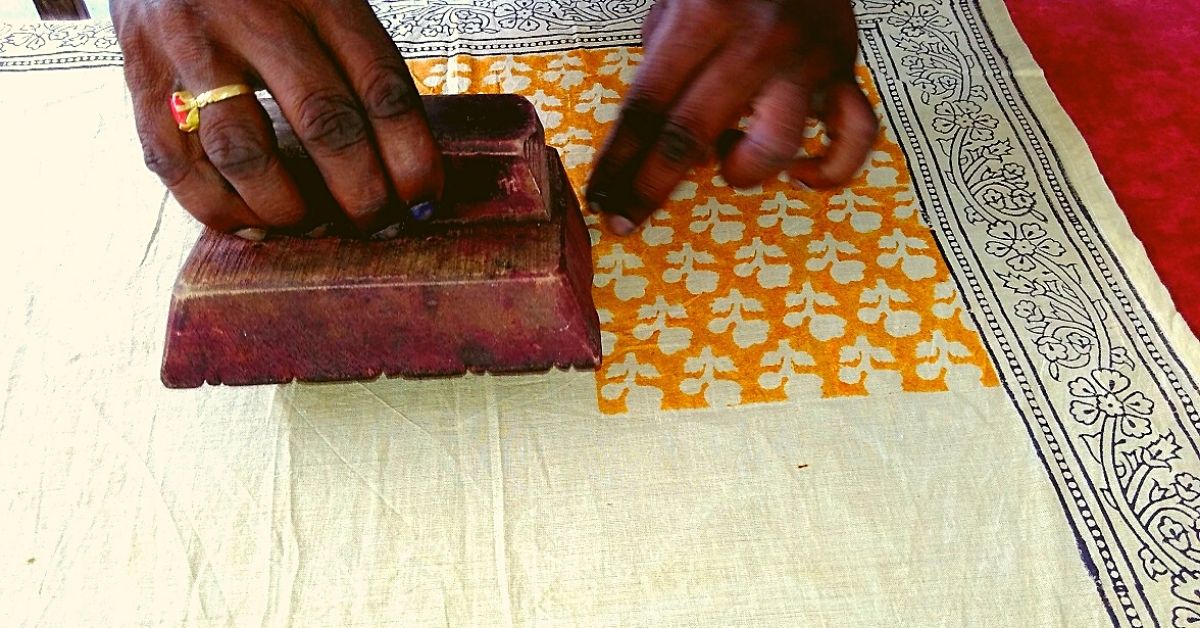
For adding different colours, Varun says, “Alum is mixed with water for red colour. Black is made with saltwater, iron scrap and jaggery. The mixture is kept in a mud jar for 21 days. Brown is a mix of red and black colours. Roots, barks, leaves and flowers help get different shades too. We clean the blocks with sesame oil daily to ensure durability and quality. That is why my grandfather’s teakwood blocks have lasted for so long.”
Get in touch with PVS Kalamkari here
Edited by Yoshita Rao
If you found our stories insightful, informative, or even just enjoyable, we invite you to consider making a voluntary payment to support the work we do at The Better India. Your contribution helps us continue producing quality content that educates, inspires, and drives positive change.
Choose one of the payment options below for your contribution-
By paying for the stories you value, you directly contribute to sustaining our efforts focused on making a difference in the world. Together, let’s ensure that impactful stories continue to be told and shared, enriching lives and communities alike.
Thank you for your support. Here are some frequently asked questions you might find helpful to know why you are contributing?


This story made me
-
97
-
121
-
89
-
167











